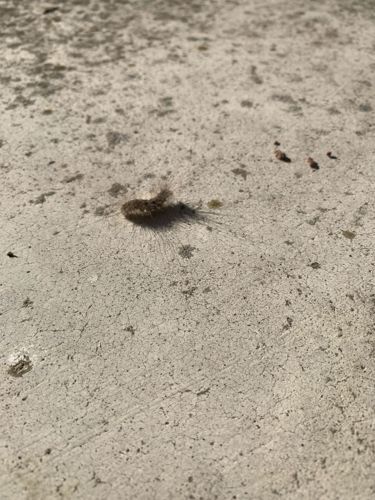Carpet Beetle Larva (likely Varied Carpet Beetle or Black Carpet Beetle)
Scientific Name: Likely *Anthrenus verbasci* (Varied Carpet Beetle) or *Attagenus unicolor* (Black Carpet Beetle) in larval stage. Exact species cannot be confirmed without closer inspection.
Order & Family: Order: Coleoptera, Family: Dermestidae
Size: Larvae typically range from 2mm to 5mm (.08 to .2 inches) in length, depending on the species and developmental stage. They are often described as small, hairy, and grub-like.

Natural Habitat
Indoors, larvae are found in closets, attics, under furniture, in air ducts, and in undisturbed areas where organic debris accumulates. Outdoors, adult beetles can be found near flowers.
Diet & Feeding
The larvae primarily feed on keratin-containing materials such as natural fibers (wool, silk, fur, feathers), dried animal products (taxidermy, dried meat, pet hair), and sometimes even plant-based materials like grains and cereals. Adult carpet beetles feed on pollen and nectar.
Behavior Patterns
Larvae will often roll into a C-shape when disturbed. They are typically found in dark, undisturbed areas. As they grow, they periodically shed their skin (molt). Adult carpet beetles are good fliers and are attracted to light.
Risks & Benefits
Risks: Carpet beetle larvae are common household pests that can cause significant damage to textiles, clothing, carpets, furniture, and museum collections. They do not bite humans but some people may develop skin irritation from contact with their bristles. Benefits: In nature, they play a role as scavengers, breaking down dead organic matter. However, their role in homes is primarily destructive.
Identified on: 8/31/2025